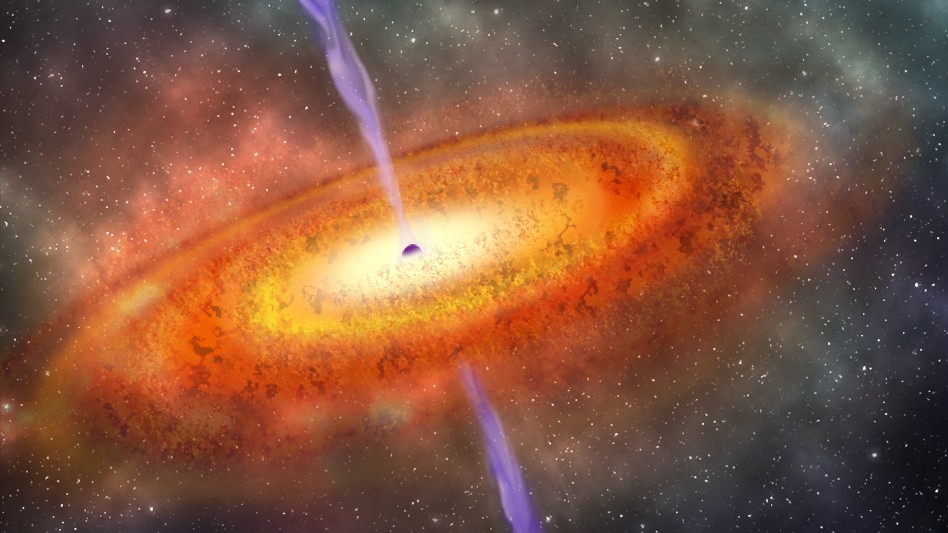

A Supermassive Black Hole That “Shouldn’t Exist”
The finding challenges current understanding of how black holes form.

A team of astronomers, including two from MIT, has detected the most distant supermassive black hole ever observed. The black hole sits in the center of an ultrabright quasar, the light of which was emitted just 690 million years after the Big Bang. That light has taken about 13 billion years to reach us—a span of time that is nearly equal to the age of the universe.
The black hole is about 800 million times as massive as our sun—a Goliath by modern-day standards and a relative anomaly in the early universe. “This is the only object we have observed from this era,” says physics professor Robert Simcoe of MIT’s Kavli Institute for Astrophysics and Space Research. “It has an extremely high mass, and yet the universe is so young that this thing shouldn’t exist. The universe was just not old enough to make a black hole that big. It’s very puzzling.”
Adding to the intrigue is the environment in which the black hole formed: the scientists have deduced that it took shape just as the universe was undergoing a fundamental shift away from an opaque environment dominated by neutral hydrogen, in which the electrons are bound to their nucleus. As more stars and galaxies formed, they eventually generated enough radiation to flip hydrogen to an ionized state, in which the electrons were set free, yielding a plasma of unassociated electrons and protons that still exists today.
The black hole was identified and studied using data collected at the Magellan telescopes in Chile by FIRE (the Folded-port Infrared Echellette), a spectrometer built by Simcoe that classifies objects on the basis of their infrared spectra. Given this data, the team believes that the newly discovered black hole existed in an environment that was about half neutral and half ionized.
“What we have found is that the universe was about 50/50—it’s a moment when the first galaxies emerged from their cocoons of neutral gas and started to shine their way out,” says Simcoe, who coauthored a Nature paper on the discovery. “This is the most accurate measurement of that time, and a real indication of when the first stars turned on.”
How such a massive black hole formed so early in the universe’s history remains a mystery. It’s thought that black holes grow by absorbing mass from the surrounding environment. Extremely large black holes such as this one should form over periods much longer than 690 million years.
“If you start with a seed like a big star, and let it grow at the maximum possible rate, and start at the moment of the Big Bang, you could never make something with 800 million solar masses—it’s unrealistic,” Simcoe says. “So there must be another way that it formed. And how exactly that happens, nobody knows.”